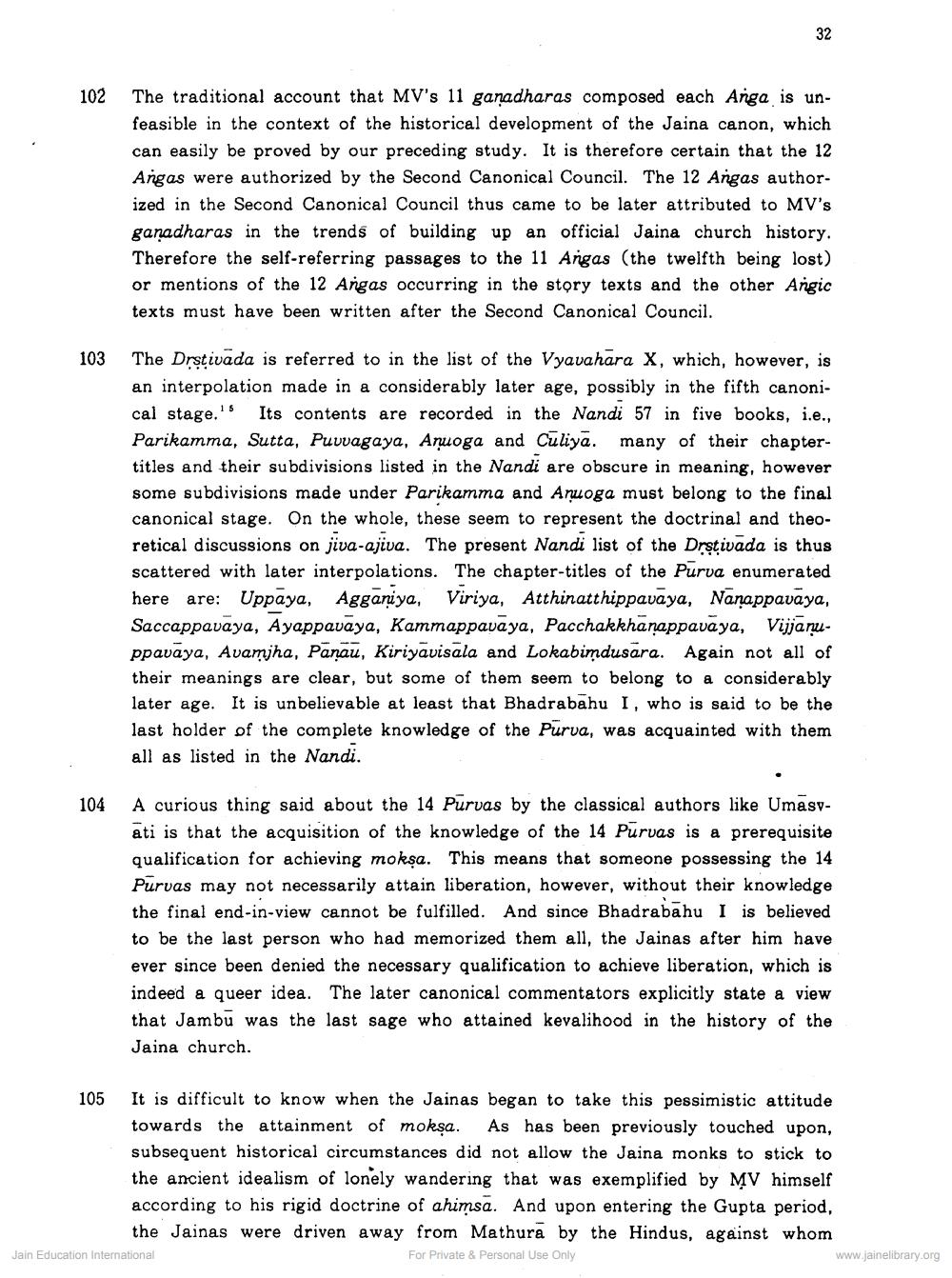________________
102
103
104
105
32
The traditional account that MV's 11 ganadharas composed each Anga is unfeasible in the context of the historical development of the Jaina canon, which can easily be proved by our preceding study. It is therefore certain that the 12 Angas were authorized by the Second Canonical Council. The 12 Angas authorized in the Second Canonical Council thus came to be later attributed to MV's ganadharas in the trends of building up an official Jaina church history. Therefore the self-referring passages to the 11 Angas (the twelfth being lost) or mentions of the 12 Angas occurring in the story texts and the other Angic texts must have been written after the Second Canonical Council.
The Drstivada is referred to in the list of the Vyavahara X, which, however, is an interpolation made in a considerably later age, possibly in the fifth canonical stage." Its contents are recorded in the Nandi 57 in five books, i.e., Parikamma, Sutta, Puvvagaya, Anuoga and Culiya. many of their chaptertitles and their subdivisions listed in the Nandi are obscure in meaning, however some subdivisions made under Parikamma and Anuoga must belong to the final canonical stage. On the whole, these seem to represent the doctrinal and theoretical discussions on jiva-ajiva. The present Nandi list of the Drstivada is thus scattered with later interpolations. The chapter-titles of the Purva enumerated are: Uppaya, Agganiya, Viriya, Atthinatthippavaya, Nanappavaya, Saccappavaya, Ayappavaya, Kammappavaya, Pacchakkhanappavaya, Vijjāņu ppavaya, Avamjha, Panau, Kiriyavisala and Lokabindusara. Again not all of their meanings are clear, but some of them seem to belong to a considerably later age. It is unbelievable at least that Bhadrabahu I, who is said to be the last holder of the complete knowledge of the Purva, was acquainted with them all as listed in the Nandi,
A curious thing said about the 14 Purvas by the classical authors like Umasvati is that the acquisition of the knowledge of the 14 Purvas is a prerequisite. qualification for achieving mokṣa. This means that someone possessing the 14 Purvas may not necessarily attain liberation, however, without their knowledge the final end-in-view cannot be fulfilled. And since Bhadrabahu I is believed to be the last person who had memorized them all, the Jainas after him have ever since been denied the necessary qualification to achieve liberation, which is indeed a queer idea. The later canonical commentators explicitly state a view that Jambu was the last sage who attained kevalihood in the history of the Jaina church.
It is difficult to know when the Jainas began to take this pessimistic attitude towards the attainment of mokṣa. As has been previously touched upon, subsequent historical circumstances did not allow the Jaina monks to stick to the ancient idealism of lonely wandering that was exemplified by MV himself according to his rigid doctrine of ahimsa. And upon entering the Gupta period, the Jainas were driven away from Mathura by the Hindus, against whom
For Private & Personal Use Only
Jain Education International
www.jainelibrary.org




